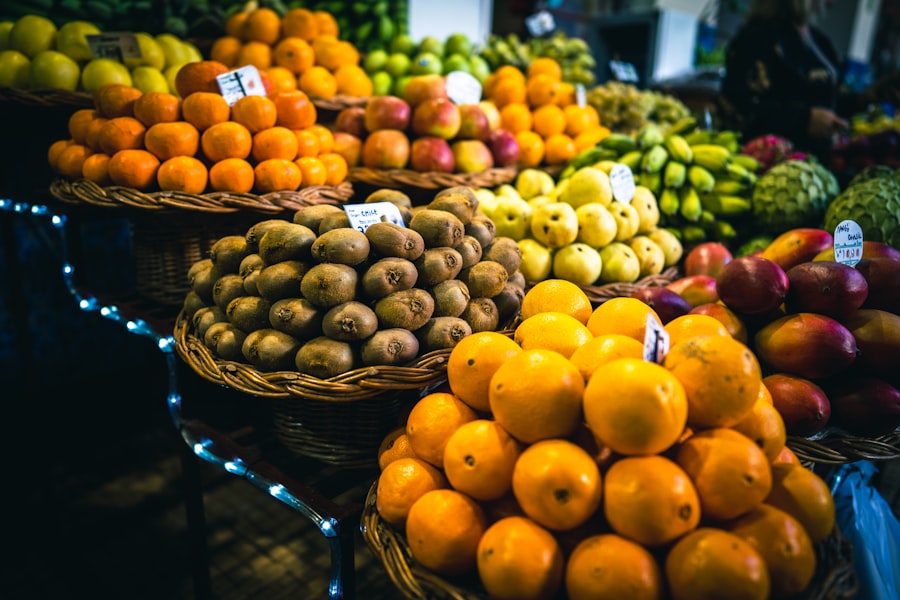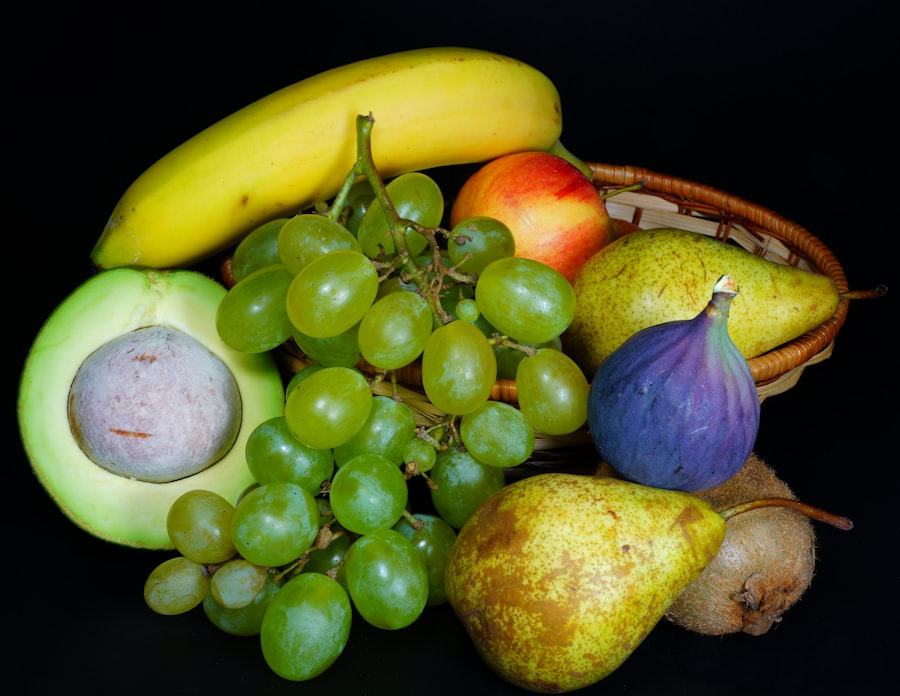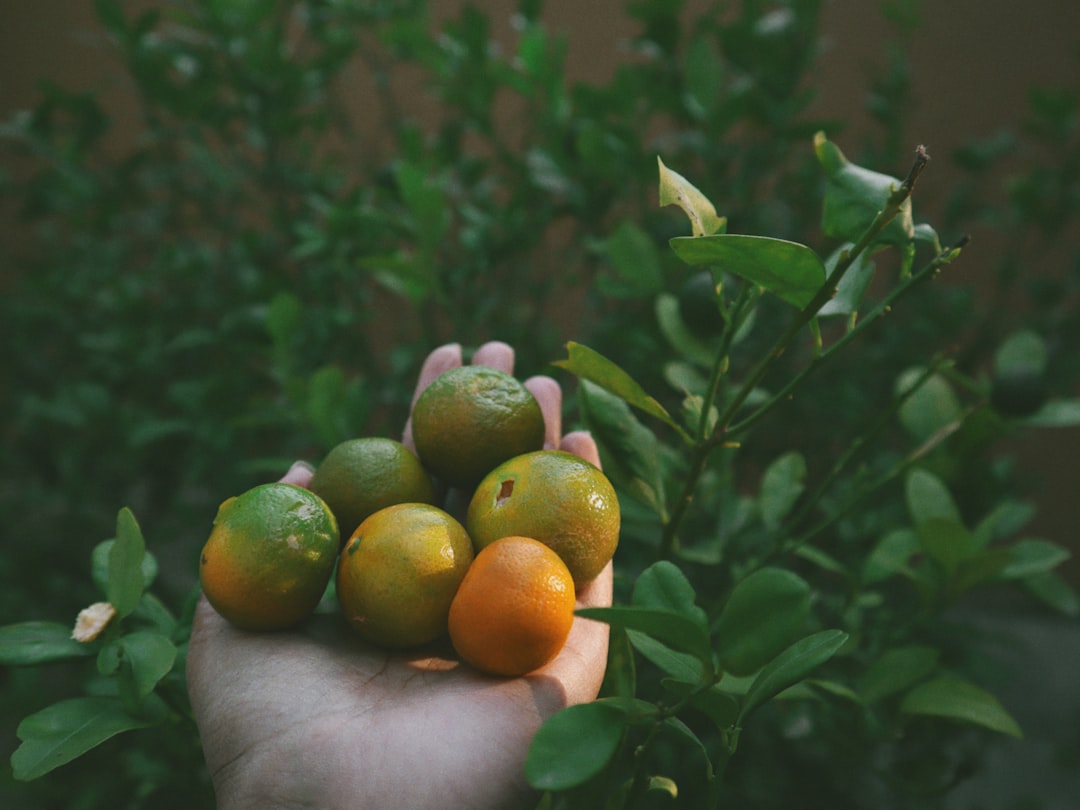The shelf life of fresh fruit is influenced by a myriad of factors, each playing a crucial role in determining how long the fruit remains edible and appealing. One of the primary factors is the type of fruit itself; some fruits, like apples and oranges, have a naturally longer shelf life due to their thicker skins and lower moisture content, while others, such as berries and peaches, are more perishable. Additionally, the ripeness at which the fruit is harvested can significantly impact its longevity.
Fruits picked too early may not develop their full flavor and texture, while those harvested at peak ripeness may spoil more quickly if not handled properly. Environmental conditions also play a pivotal role in the shelf life of fresh fruit. Factors such as temperature, humidity, and exposure to light can accelerate the ripening process and lead to spoilage.
For instance, fruits stored in warm, humid environments are more susceptible to mold growth and decay. Furthermore, the presence of ethylene gas, a natural plant hormone emitted by certain fruits, can hasten ripening in nearby produce. Understanding these factors is essential for consumers and retailers alike, as it allows them to implement strategies that can extend the freshness and quality of their fruit.
Key Takeaways
- Understanding and controlling factors like temperature, humidity, and ethylene gas are crucial for extending fresh fruit shelf life.
- Proper storage techniques and choosing suitable packaging help maintain fruit freshness and prevent spoilage.
- Regular inspection and careful handling of fresh fruit reduce the risk of mold growth and cross-contamination.
- Utilizing preservation methods such as freezing, canning, and controlled ripening can significantly prolong fruit usability.
- Adopting sustainable practices in fruit storage minimizes food waste and supports environmental health.
Proper Storage Techniques for Extending Fresh Fruit Shelf Life
To maximize the shelf life of fresh fruit, proper storage techniques are paramount. One effective method is to store fruits in a cool, dry place away from direct sunlight. For many fruits, refrigeration is beneficial; however, it is important to note that not all fruits thrive in cold environments.
For example, bananas and avocados should be kept at room temperature until they reach the desired ripeness before being transferred to the refrigerator. This careful consideration of storage conditions can significantly prolong the freshness of various fruits. Another key technique involves using breathable containers or bags that allow for air circulation while protecting the fruit from external elements.
Plastic bags can trap moisture and lead to mold growth, so opting for perforated bags or containers with ventilation holes can help maintain optimal humidity levels.
By employing these storage techniques, individuals can enjoy fresh fruit for a longer period while minimizing waste.
The Role of Temperature and Humidity in Preserving Fresh Fruit

Temperature and humidity are critical components in preserving the quality and longevity of fresh fruit. The ideal temperature for most fruits is typically between 32°F and 40°F (0°C to 4°C), which slows down metabolic processes and reduces spoilage rates. However, certain fruits have specific temperature requirements; for instance, tropical fruits like mangoes and pineapples prefer warmer conditions.
Understanding these nuances allows consumers to create an environment that best suits their fruit selection. Humidity levels also play a significant role in maintaining freshness. High humidity can lead to condensation on fruit surfaces, promoting mold growth and decay.
Conversely, low humidity can cause fruits to dehydrate and lose their crispness. A relative humidity level of around 85% to 90% is generally ideal for most fruits stored in refrigeration. Utilizing humidity-controlled storage solutions or placing a damp cloth in the storage area can help achieve this balance, ensuring that fruits remain juicy and flavorful for an extended period.
Choosing the Right Packaging for Fresh Fruit to Prolong Shelf Life
| Packaging Type | Material | Oxygen Permeability | Moisture Control | Effect on Shelf Life | Best For |
|---|---|---|---|---|---|
| Modified Atmosphere Packaging (MAP) | Polyethylene, Polypropylene films | Low to Moderate | Good moisture retention | Extends shelf life by 30-50% | Berries, stone fruits |
| Perforated Plastic Bags | Polyethylene with micro-perforations | Moderate | Moderate moisture control | Extends shelf life by 10-20% | Apples, pears |
| Clamshell Containers | Rigid PET plastic | Low | Good moisture control | Extends shelf life by 20-30% | Berries, grapes |
| Waxed Cardboard Boxes | Cardboard with wax coating | Moderate | Moderate moisture control | Extends shelf life by 15-25% | Citrus fruits, apples |
| Biodegradable Films | PLA, cellulose-based films | Variable | Good moisture control | Extends shelf life by 15-30% | Organic fruits, specialty markets |
Selecting appropriate packaging is essential for prolonging the shelf life of fresh fruit. The right packaging not only protects the fruit from physical damage but also helps regulate moisture levels and gas exchange. For instance, using clamshell containers for berries can prevent bruising while allowing for adequate airflow.
Similarly, mesh bags are ideal for citrus fruits as they provide ventilation while preventing moisture accumulation. Moreover, innovative packaging solutions such as modified atmosphere packaging (MAP) can significantly enhance shelf life by altering the composition of gases surrounding the fruit. This technology reduces oxygen levels and increases carbon dioxide levels, slowing down respiration rates and delaying ripening.
By investing in suitable packaging options, retailers and consumers can effectively extend the freshness of their fruit while minimizing waste.
Tips for Handling Fresh Fruit to Prevent Spoilage
Proper handling of fresh fruit is crucial in preventing spoilage and maintaining quality. One fundamental tip is to wash hands thoroughly before handling any produce to minimize the transfer of bacteria or contaminants. Additionally, it is advisable to wash fruits under running water just before consumption rather than before storage, as excess moisture can promote mold growth during storage.
When transporting or storing fresh fruit, care should be taken to avoid bruising or damaging the skin. Bruises not only affect the appearance of the fruit but also create openings for pathogens to enter, leading to quicker spoilage. Using padded containers or placing a layer of cushioning material between layers of fruit can help protect them during transit.
By adopting these handling practices, individuals can significantly reduce spoilage rates and enjoy fresher fruit for longer periods.
Utilizing Ethylene Gas Absorbers to Extend Fresh Fruit Shelf Life

Ethylene gas absorbers are an innovative solution for extending the shelf life of fresh fruit by mitigating the effects of ethylene gas produced during ripening. These absorbers work by capturing ethylene molecules in the storage environment, thereby slowing down the ripening process and delaying spoilage. This technology is particularly beneficial for retailers who need to manage large quantities of produce while minimizing waste.
Incorporating ethylene gas absorbers into storage practices can be as simple as placing them alongside fruits in storage containers or display cases. Many commercial products are available that are specifically designed for this purpose, making it easy for both consumers and retailers to implement this strategy. By utilizing ethylene gas absorbers, individuals can enjoy fresher fruit for longer periods while reducing food waste significantly.
The Importance of Regularly Inspecting Fresh Fruit for Signs of Spoilage
Regular inspection of fresh fruit is vital in maintaining quality and preventing spoilage from spreading among other fruits. By routinely checking for signs of decay—such as soft spots, discoloration, or mold—individuals can identify problematic pieces before they affect others in storage. This proactive approach not only helps preserve the remaining fruit but also ensures that consumers enjoy only the freshest produce.
Additionally, inspecting fruit allows individuals to monitor ripeness levels more effectively. Some fruits continue to ripen after being harvested; therefore, keeping an eye on their condition enables timely consumption or appropriate storage adjustments. By making inspection a regular practice, individuals can significantly enhance their ability to manage fresh fruit effectively and reduce waste.
Best Practices for Ripening Fresh Fruit to Maximize Shelf Life
Ripening fresh fruit properly is essential for maximizing its shelf life while ensuring optimal flavor and texture. For many fruits, such as avocados and bananas, allowing them to ripen at room temperature is ideal until they reach the desired softness. Once ripe, transferring them to the refrigerator can slow down further ripening and extend their edibility.
It is also beneficial to group ethylene-producing fruits together during the ripening process. For example, placing apples next to avocados can help accelerate ripening due to the ethylene gas emitted by apples. However, once ripe, it is crucial to separate these fruits from others sensitive to ethylene to prevent premature spoilage.
By following these best practices for ripening, individuals can enjoy fresh fruit at its peak while extending its overall shelf life.
Incorporating Preservation Methods such as Freezing and Canning for Long-Term Fresh Fruit Storage
For those looking to extend the shelf life of fresh fruit beyond its natural limits, preservation methods such as freezing and canning offer excellent solutions. Freezing is particularly effective for maintaining flavor and nutritional value while extending shelf life significantly. Most fruits freeze well when washed, cut into appropriate sizes, and stored in airtight containers or freezer bags.
This method allows individuals to enjoy seasonal fruits year-round without compromising quality. Canning is another viable option for long-term storage; however, it requires careful preparation and adherence to safety guidelines to prevent spoilage or contamination. Fruits should be processed using proper techniques that include sterilizing jars and using appropriate preservatives when necessary.
How to Prevent Cross-Contamination and Mold Growth in Fresh Fruit
Preventing cross-contamination and mold growth is essential in maintaining the quality of fresh fruit during storage and handling. One effective strategy is to keep fruits separate from raw meats or other potentially contaminated foods in both storage areas and during transportation. Utilizing designated cutting boards and utensils exclusively for fruits can further minimize contamination risks.
Additionally, ensuring that storage areas are clean and dry helps prevent mold growth on fresh produce. Regularly cleaning shelves or containers where fruits are stored can eliminate any residual moisture or organic matter that may promote mold development. By implementing these preventive measures, individuals can significantly reduce the risk of spoilage and enjoy fresher fruit for longer periods.
Sustainable Practices for Maximizing Fresh Fruit Shelf Life and Reducing Food Waste
Sustainability plays a crucial role in maximizing fresh fruit shelf life while minimizing food waste. One effective practice is purchasing only what is needed based on consumption patterns; this helps prevent overbuying and subsequent spoilage. Additionally, supporting local farmers’ markets can reduce transportation-related emissions while providing access to fresher produce with potentially longer shelf lives.
Composting spoiled or excess fruit instead of discarding it in landfills is another sustainable practice that contributes positively to environmental health. Composting not only reduces waste but also enriches soil quality for future agricultural endeavors. By adopting these sustainable practices, individuals can contribute to a more environmentally friendly approach while enjoying fresh fruit at its best.
In conclusion, understanding the various factors affecting fresh fruit shelf life allows consumers to make informed decisions about storage techniques, handling practices, and preservation methods. By implementing these strategies effectively, individuals can enjoy fresher produce while minimizing waste—a win-win situation for both consumers and the environment alike.
To learn more about extending the life of fresh fruit, you can check out this informative article on the topic. It provides practical tips and techniques that can help you keep your fruits fresher for longer. For more details, visit this article.
WATCH THIS! The 100-Year Lie That Built Your Grocery Store — The Hidden Truth About “Fresh” Produce
FAQs
How can I keep fresh fruit from spoiling quickly?
To keep fresh fruit from spoiling quickly, store it in a cool, dry place or refrigerate it depending on the type of fruit. Avoid washing fruit until just before eating, as excess moisture can promote mold growth. Also, keep fruits that produce ethylene gas, like apples and bananas, separate from those sensitive to it.
What is the best way to store berries to extend their freshness?
Berries should be stored in the refrigerator in a breathable container lined with paper towels to absorb excess moisture. Avoid washing them until just before consumption to prevent mold and spoilage.
Can I freeze fresh fruit to make it last longer?
Yes, freezing fresh fruit is an effective way to extend its shelf life. Wash, dry, and, if necessary, cut the fruit into pieces before freezing. Use airtight containers or freezer bags to prevent freezer burn.
Does refrigeration help all types of fruit last longer?
Not all fruits benefit from refrigeration. While berries, grapes, and apples last longer in the fridge, tropical fruits like bananas, mangoes, and pineapples are best stored at room temperature until ripe, then refrigerated if needed.
How does ethylene gas affect the shelf life of fresh fruit?
Ethylene gas is a natural plant hormone emitted by some fruits that accelerates ripening. Storing ethylene-producing fruits separately from ethylene-sensitive fruits can help prevent premature spoilage.
Is it helpful to wash fruit before storing it?
It is generally better to wash fruit just before eating rather than before storing. Washing can introduce moisture that promotes mold and bacteria growth, reducing the fruit’s shelf life.
What role does humidity play in storing fresh fruit?
Humidity levels affect fruit freshness; some fruits require high humidity to stay crisp, while others need low humidity to prevent mold. Using the crisper drawer in a refrigerator with adjustable humidity settings can help maintain optimal conditions.
Are there any natural methods to preserve fresh fruit longer?
Natural methods include storing fruit with a paper towel to absorb moisture, using lemon juice to prevent browning on cut fruit, and keeping fruit in breathable containers to reduce moisture buildup.
